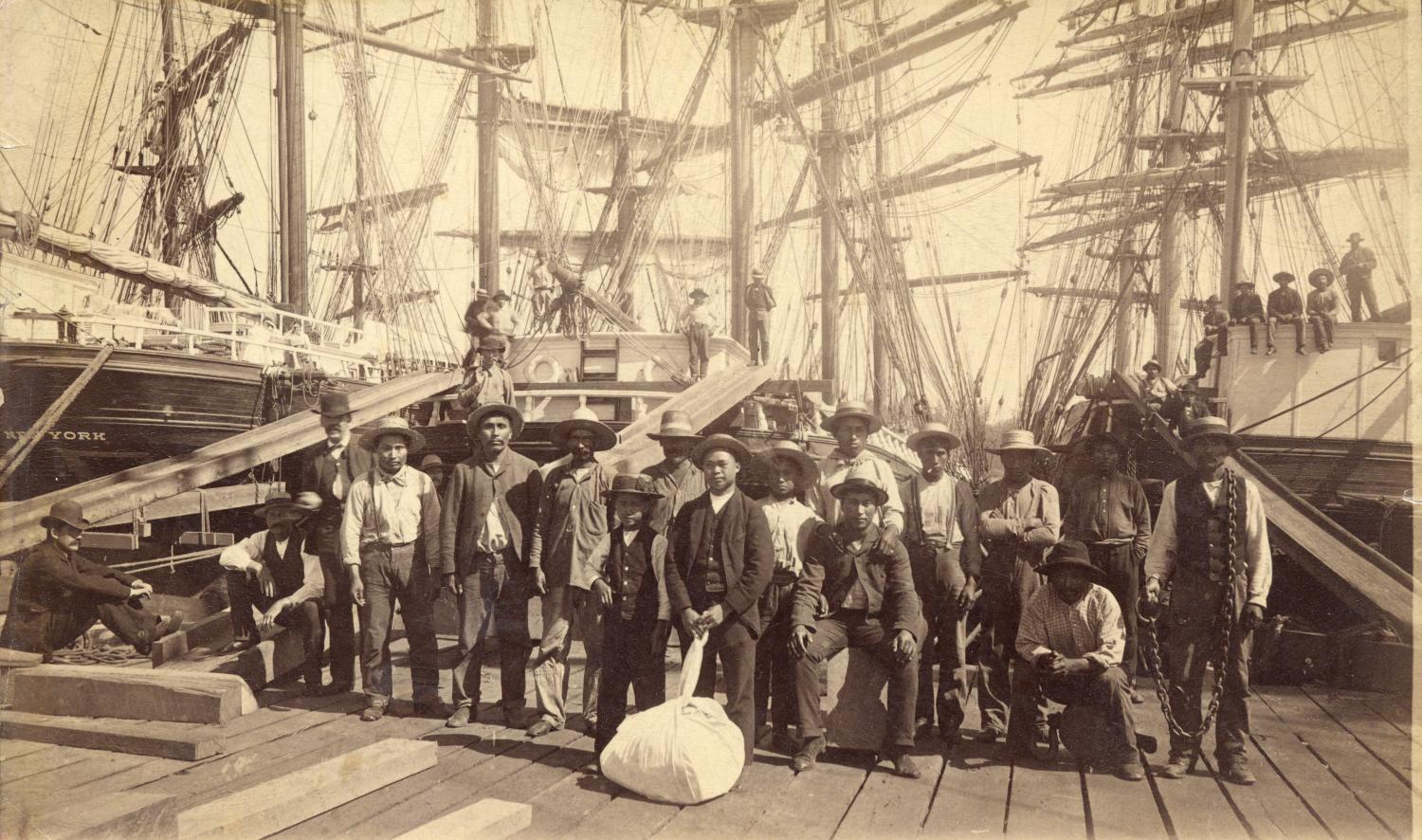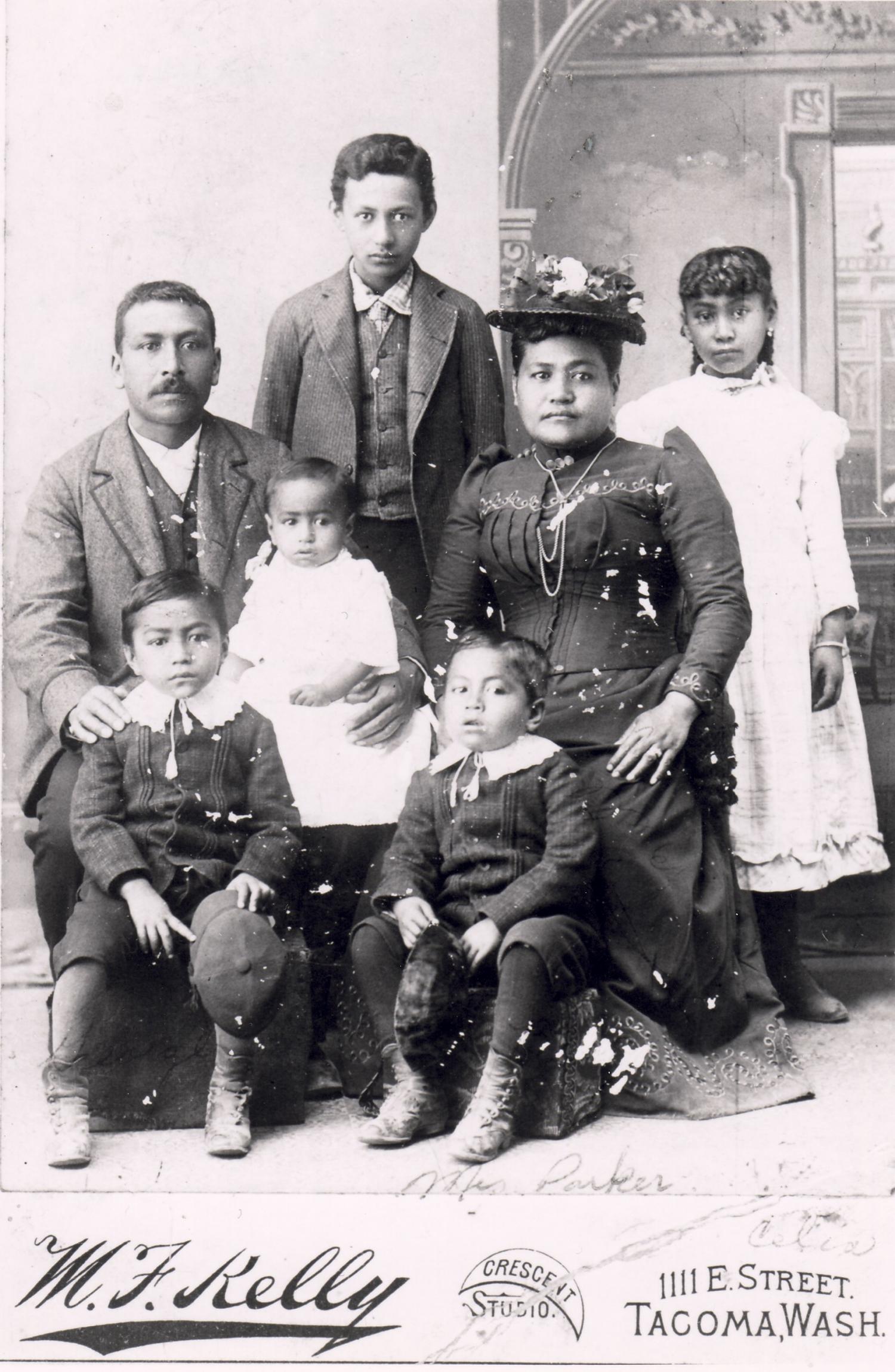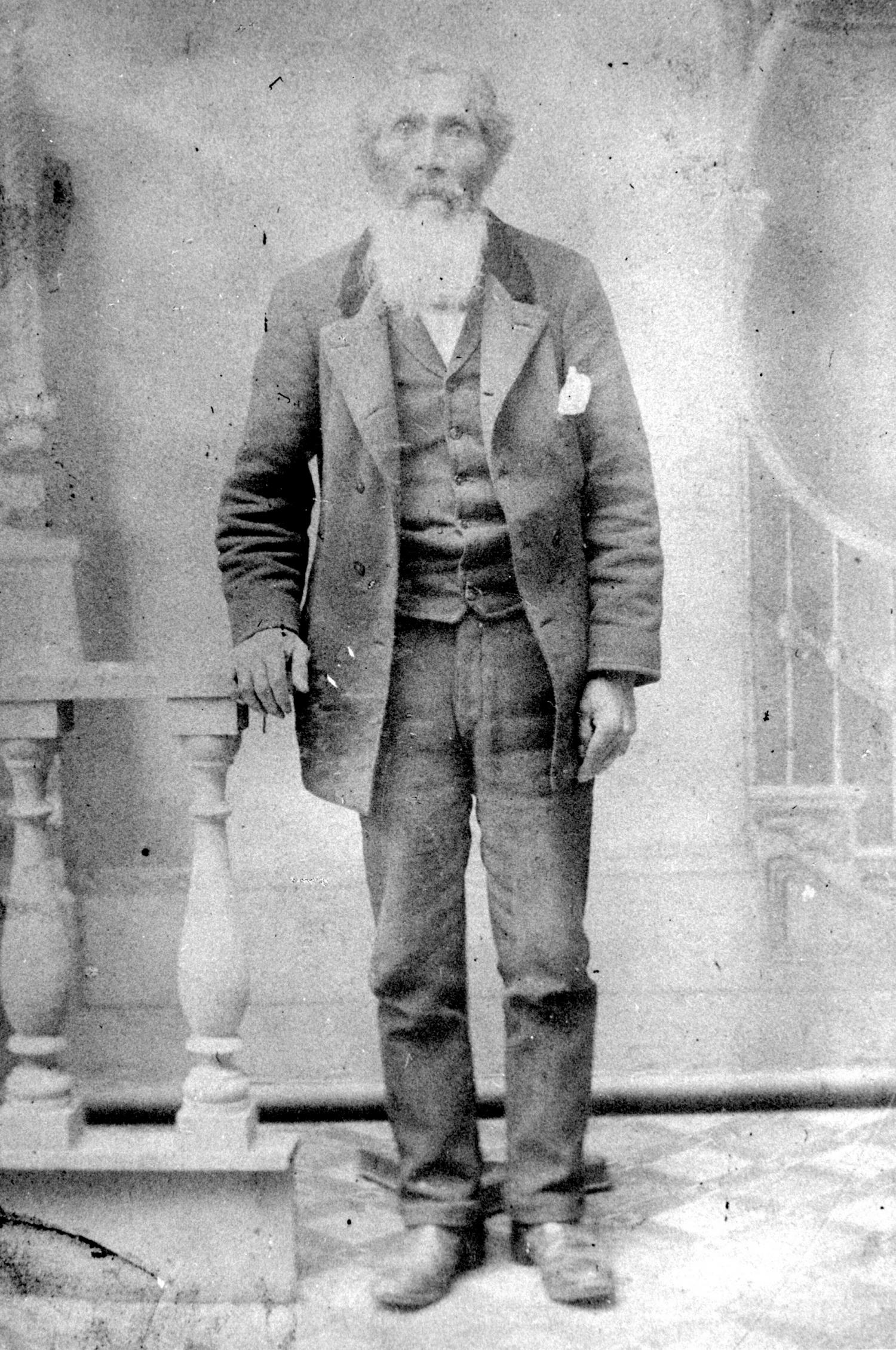Hawaiians Come to B.C.
Rarely acknowledged, Hawaiians were among the region's first non-Indigenous residents
Date: 1830
In the late 18th century, Hawaiian men began arriving in the Pacific Northwest. Perhaps impressed by their nautical experience, European explorers hired many Hawaiians, known for their strong swimming skills, to work on their ships. Other so-called ‘Kanaka Maoli’ — which means “the real people” — eventually worked jobs in the region’s burgeoning fur trade and later in farming, mining, forestry and other resource sectors.
In 1830, Hawaiians had become one of the most populous non-white groups employed by the Hudson’s Bay Company (HBC), the British firm that controlled B.C.’s lucrative fur trade from the 1820s onward. While exact numbers are unknown, nearly every HBC outpost had a Hawaiian presence.
The fur trade began to decline around the mid-1800s. However, many Hawaiians decided to stick around, perhaps motivated by conditions back home. By then, foreign imperialism and the import of Christianity had begun to erode traditional Hawaiian life. William Naukana, an HBC employee friendly with James Douglas, reportedly went back to Hawaii sometime in the 1850s only to find that a sugar plantation had usurped his family’s land, a common problem Indigenous Hawaiians faced at the time.
Naukana returned to the Pacific Northwest and settled in the San Juan Islands, an archipelago that today neighbours B.C.’s Southern Gulf Islands. After the United States secured the long-disputed islands in 1872, Naukana headed north. Like other people of colour, Hawaiians faced severe discrimination in the U.S., particularly in the Oregon Territory. They couldn’t apply for land grants, become citizens, vote, testify against a white person in court or even buy alcohol. Life in B.C. was wildly different. Unique among non-European communities, Hawaiians received much the same rights as white men, free to become citizens, vote and own land. (In fact, as many Hawaiians participated in B.C.’s first elections as white voters.) Naukana settled on Portland Island near Salt Spring Island, which attracted many of his Hawaiian counterparts. In 1885, one visitor described Salt Spring as a “Kanaka or Sandwich Islander settlement,” a reference to the name explorer James Cook had given the Hawaiian islands.
Small Hawaiian communities dotted B.C.’s coast. Besides the Gulf Islands, where locals held traditional lūʻau celebrations well into the 20th century, Hawaiian men also lived in Victoria, Nanaimo and across Greater Vancouver. Near what became Stanley Park in Vancouver once stood a small settlement called Kanaka Ranch. Moodyville in North Vancouver had Kanaka’s Row.
It’s unclear how many British Columbians descend from these early Hawaiian pioneers, but it could be thousands. The numerous names and spelling variations many of these settlers took on, as well as a dearth of written records, makes tracing them a challenge. Early generations of Hawaiian descendants also often married non-Hawaiian women, particularly of Indigenous descent, further clouding their lineage. In Canada’s 2016 census, only 3,295 people identified as Hawaiian.
Sources:
1. 2016 Census. Statistics Canada, 2016, www12.statcan.gc.ca/census-recensement/2016/dp-pd/prof/details/page.cfm?Lang=E&Geo1=PR&Code1=01&Geo2=&Code2=&SearchText=Canada&SearchType=Begins&SearchPR=01&B1=All&TABID=1&type=0.
2. Barman, Jean, and Bruce McIntyre Watson. Leaving Paradise: Indigenous Hawaiians in the Pacific Northwest, 1787-1898. University of Hawaii Press, May 2006, uhpress.hawaii.edu/title/leaving-paradise-indigenous-hawaiians-in-the-pacific-northwest-1787-1898/.
3. Barman, Jean. NAUKANA, WILLIAM, Likameen, Lakamine, Lackaman. Dictionary of Canadian Biography, www.biographi.ca/en/bio/naukana_william_13E.html.
4. Barman, Jean. New Land, New Lives: Hawaiian Settlement in British Columbia. The Hawaiian Journal of History, 1995, evols.library.manoa.hawaii.edu/bitstream/handle/10524/429/JL29007.pdf?sequence=1.
5. Goodman, John. Nahanee Family Takes The Road Forward. North Shore News, 16 July 2017, www.nsnews.com/news/nahanee-family-takes-the-road-forward-1.21158116.
6. “Hawaiian Settlement on Russell Island.” Gulf Islands National Park Reserve, Parks Canada, www.pc.gc.ca/en/pn-np/bc/gulf/culture/hawaienne-hawaiian.
7. Hawaiians Helped B.C. Grow. The Vancouver Sun, 3 Feb. 2007, www.pressreader.com/canada/vancouver-sun/20070203/282540128866291.
8. Hawai`i Legal History: Timeline. Law Library of University of Hawaii at Manoa , law-hawaii.libguides.com/hawaiilegalhistory.
9. Kanaka Timeline: Hawaii to the Pacific NorthWest. Salt Spring Island Archives, saltspringarchives.com/kanaka/barb/timeline.html.
10. Koppel, Tom. Salt Spring's Hawaiian Community. Salt Spring Island Archives, 2005, saltspringarchives.com/multicultural/kanaka.htm.
11. Sandwell, R.W. Review of Kanaka: The Untold Story of Hawaiian Pioneers in British Columbia and the Pacific Northwest by Tom Koppel. BC Studies, Summer 1997, ojs.library.ubc.ca/index.php/bcstudies/article/view/185328/184669.
12. Saunders, Doug. Hawaiian-Canadians and 'Buffalo' Canadians: The Hidden History of Confederation. The Globe and Mail, 1 July 2017, www.theglobeandmail.com/opinion/two-forgotten-diasporas-defined-early-canada/article35511267/.




